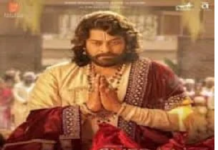
Intro:
For years, Bollywood has dominated India’s cultural landscape, but recent trends and developments point to a deeper Bollywood crisis that goes beyond box office numbers.
Despite a temporary comeback in 2023, driven by blockbusters like Pathaan, Jawan, and Gadar 2, Bollywood’s decline cannot be ignored. Behind the record-breaking profits lies an uncomfortable truth—Bollywood has lost its creativity, its experimentation, and, most importantly, its soul. Let’s analyze this downfall step by step.
1. The Aftershocks of COVID-19
The COVID-19 pandemic fundamentally altered the film-watching experience. Lockdowns forced people to stay home, and in the absence of theatres, OTT platforms surged in popularity.
Platforms like Netflix, Amazon Prime, and Disney+ Hotstar brought films to people’s living rooms at a fraction of the cost of cinema tickets. Over time, viewers developed a preference for streaming content due to its affordability, accessibility, and simple variety.
The rise of free OTT platforms, such as Amazon Mini TV (now integrated with MX Player), increased Bollywood’s problems. These platforms, funded through ad-based models, allowed people to watch not just Bollywood films but also regional cinema, international content, and classics—all dubbed in Hindi.
Whether it’s a Tamil blockbuster, Korean drama, or a Chinese film, audiences now have access to diverse content at no extra cost.
As a result, Bollywood faced competition from two directions: regional films on one hand and Hollywood content on the other. For audiences, the options grew broader while Bollywood’s dominance reduced.
2. The Formula-Based, Corporate Sector
Another critical issue eating away at Bollywood is the rise of corporatization—a phenomenon where profits take precedence over creativity. Film studios and producers, driven by short-term financial goals, have devised a so-called “hit formula”:
- Avoid originality: Stick to proven genres, sequels, remakes of Tamil and Telugu hits, and old song remixes.
- Rely on star power: Cast big actors in lead roles while neglecting storylines or direction.
- Copy Hollywood: Recycle scripts, scenes, and ideas.
- Keep it superficial: Avoid thought-provoking content; instead, produce fast-paced, larger-than-life films packed with VFX and melodrama.
- Focus on marketing: Spend massive amounts of money on promotions to generate hype, regardless of the film’s quality.
This formula has resulted in blockbusters like Pathaan, Jawan, and Tiger 3, but these films lack emotional depth, lasting appeal, or rewatch value. The reason for the Bollywood crisis is that it is turning out what feels like factory-made films—big, loud, and forgettable.
Veteran filmmakers like Shekhar Kapur and Shyam Benegal have spoken out about the dangers of corporatization. Kapur once predicted that corporations would suppress creative freedom in Bollywood—a prophecy that now seems to be coming true.
3. Absence of Meaningful Cinema for Bollywood Crisis
Bollywood of the past was known for storytelling that resonated with audiences. Films like Mother India, Mughal-e-Azam, Sholay, Dilwale Dulhania Le Jayenge, and Swades combined gripping narratives, social commentary, and emotional depth. Today, however, such films are increasingly rare.
The focus has shifted to mindless action, melodramatic comedy, and hyper-patriotic themes—genres that are repeated and discomfort. For example, compare Shahrukh Khan’s iconic roles in DDLJ, Devdas, and Swades to his recent blockbusters like Pathaan and Jawan.
While these films succeeded commercially, they lacked the creative ability and soul of his earlier work.
Similarly, Salman Khan’s career highlights—Maine Pyar Kiya and Hum Aapke Hain Kaun—are now overshadowed by poorly made films like Radhe and Kisi Ka Bhai Kisi Ki Jaan. The reliance on action-packed spectacles has replaced character-driven, meaningful cinema.

4. Budget Unfairness and Superstar Fees
Another major issue is Bollywood’s distorted allocation of budgets. Superstars command too expensive fees, often consuming 60% or more of a film’s budget. For instance, Akshay Kumar reportedly charged approx. ₹600 million for Khel Khel Mein—a film that ultimately flopped.
Such inflated fees leave little room for investing in screenplay, direction, or VFX, resulting in mediocre films.
This unfairness has also marginalized small and medium-budget films, which rarely get the opportunity to shine. Films like Bheja Fry and Kahaani were once box-office successes driven by word-of-mouth publicity. Today, such films struggle to find theatrical releases.
Independent filmmakers like Dibakar Banerjee have spoken about this systemic bias. Big-budget films dominate screens, leaving little room for smaller, content-driven movies. Even critically acclaimed films like 12th Fail and Laapataa Ladies are anomalies in an industry obsessed with star power and scale.
5. Bollywood’s Growing Irrelevance
With global access to content, audiences no longer tolerate poor-quality cinema. Hollywood films, backed by superior budgets and production quality, dominate the action and spectacle genres. Regional cinema—especially Telugu, Tamil, Malayalam, and Kannada films—has also gained massive popularity, offering fresh stories and innovative filmmaking.
The latest Telugu-dubbed movie, Allu Arjun Pushpa 2, is a blockbuster. Collected 1200 crores above.
In this competitive landscape, Bollywood’s formulaic approach appears outdated. Why would audiences watch an average remake when they can stream the original? Why choose Bollywood’s superficial VFX spectacles when Hollywood offers films like Avatar and Avengers?
6. The Marginalization of Small Budget Films
Affordable tickets, word-of-mouth hits, and experimental genres once defined Bollywood. Films like Badhaai Ho, Kahaani, and Bheja did well because of their originality and relatability. However, today’s system—dominated by corporate studios—leaves little room for such success stories.
Small-budget films face multiple challenges:
- Limited theatrical releases and poor time slots.
- Expensive tickets that alienate middle-class and lower-income audiences.
- OTT platforms that prioritize box office performance before acquiring films.
This creates a savage cycle where unique, content-driven films are systematically side-lined in favor of big-budget, formulaic productions.
The Solution for Bollywood Crisis: Restoring Bollywood’s Soul
To revive Bollywood crisis, the industry must accept diversity and creativity:
- Support Small-Budget Films: Producers and studios must allocate resources to low-budget, content-driven projects.
- Promote Storytelling Over Star Power: Shift focus from inflated actor fees to strong scripts, direction, and performances.
- Diversify Genres: Experiment with storytelling, much like Bollywood did in the past with films on superheroes, aliens, and unique social issues.
- Make Films Accessible: Reduce ticket prices to attract a larger, more diverse audience.
- Encourage Independent Filmmakers: Provide platforms for new voices to tell fresh, meaningful stories.








































